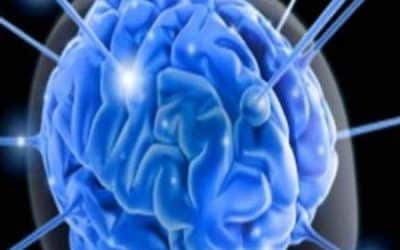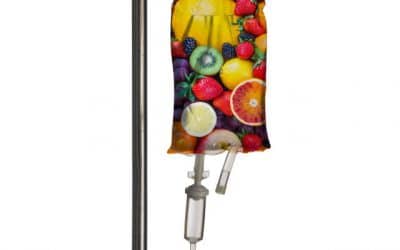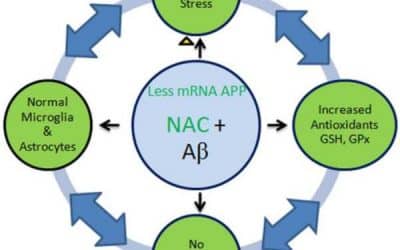Abstract Background: Mitochondrial dysfunction is a hallmark of neurodegenerative diseases including Alzheimer's disease (AD), with morphological and functional abnormalities limiting the electron transport chain and ATP production. A contributing factor of...
Alzheimer’s Disease
Explore the latest research on the use of Hyperbaric Oxygen Therapy (HBOT) to treat Alzheimer’s Disease.
Extivita maintains an extensive publication database for Alzheimer’s Disease and various other indications with therapies such as Hyperbaric Oxygen Therapy, Neurofeedback, Nutritional IV Therapy, Infrared Sauna, and Pulsed Electromagnetic Field Therapy. Explore our database on Acne and Hyperbaric Oxygen Therapy aka, HBOT, below.
For a complete list of indications treated at Extivita, explore the conditions we treat.
The protective effect of hyperbaric oxygen and Ginkgo biloba extract on Aβ25-35-induced oxidative stress and neuronal apoptosis in rats.
Alzheimer’s disease (AD) is characterized by accumulation and deposition of Aβ peptides in human brains. The present study aimed to determine the protective effect of HBO and EGB761 on Aβ25-35 peptides induced cognitive impairment and neuronal toxicity in rats. Characteristics of AD were induced in rats by the administration of Aβ25-35 in hippocampus. Rats were treated with HBO (2ATA 60min/day), EGB761 (20mg/kg/day), and the combination of HBO+EGB761 (20mg/kg/day+2ATA). The Morris water maze was used to detect the protective effects of HBO and EGB761 against cognitive impairment. The activities of SOD and GSH, the apoptosis-related genes and proteins and the apoptosis rate of hippocampus were detected. Compared to the model group, EGB761 and HBO treatments synergistically improved the escape latency. Furthermore, the activities of SOD and GSH in rat hippocampal tissue were found to have increased with a concomitant reduction in MDA levels, Bax expression, cytochrome c release, and the activity of caspase-9/3.
The possible role of antioxidant vitamin C in Alzheimer’s disease treatment and prevention
Abstract Oxidative stress is suggested to play a major role in the pathogenesis of Alzheimer's disease (AD). Among the antioxidants, vitamin C has been regarded as the most important one in neural tissue. It also decreases β-amyloid generation and acetylcholinesterase...
Hyperbaric oxygen and Ginkgo Biloba extract inhibit Aβ25-35-induced toxicity and oxidative stress in vivo: a potential role in Alzheimer’s disease.
Alzheimer’s disease is characterized by the accumulation and deposition of Aβ peptides in human brains and Aβ induced free radical-mediated damage is one of the hypotheses. In the present study, we explored the protective effects of hyperbaric oxygen (HBO) and Ginkgo Biloba extract (EGB761) on Aβ25-35-induced brain toxicity. Our results demonstrated that EGB761, HBO, and the combination HBO and EGB761, could significantly improve the cognitive function in AD rats’ model, especially the combination group. What’s more, the activities of superoxide dismutase (SOD) in rat hippocampal tissue were obviously enhanced followed by evidently reduced malondialdehyde (MDA) levels in the same treatment groups mentioned earlier. There were no differences of nitric oxide (NO) productions in the group of EGB761, HBO, and HBO and EGB761, but they were all lower than that of model group. These findings suggest that both HBO and EGB761 may relieve cell toxicity and oxidative stress in AD and thus play a potential protective role in AD. Furthermore, the combination could have better effects compared with single one.
Hyperbaric oxygen therapy for vascular dementia.
Hyperbaric oxygen therapy (HBOT) has been used to treat a variety of conditions and has shown possible efficacy for treating vascular dementia (VaD) in experimental and preliminary clinical studies. To assess the efficacy and safety of HBOT for VaD, used alone or as an adjuvant treatment. We searched ALOIS: the Cochrane Dementia and Cognitive Improvement Group Specialised Register on 20 December 2011 using the terms: hyperbaric OR oxygen OR HBO OR HBOT. ALOIS contains records of clinical trials identified from monthly searches of a number of major healthcare databases, numerous trial registries and grey literature sources. We also searched the Chinese Biomedical Database (CBM), the Chinese National Knowledge Infrastructure (CNKI) and the VIP Chinese Science and Technique Journals Database on 10 November 2011 using the terms ‘gaoyayang’, ‘xueguanxingchidai’ and ‘chidai’. In addition, we contacted authors of included studies for additional information.
Elevation of glutathione as a therapeutic strategy in Alzheimer disease
Abstract Oxidative stress has been associated with the onset and progression of mild cognitive impairment (MCI) and Alzheimer disease (AD). AD and MCI brain and plasma display extensive oxidative stress as indexed by protein oxidation, lipid peroxidation, free radical...
Electroencephalographic rhythms in Alzheimer’s disease
Abstract Physiological brain aging is characterized by synapses loss and neurodegeneration that slowly lead to an age-related decline of cognition. Neural/synaptic redundancy and plastic remodelling of brain networking, also due to mental and physical training,...
Magnesium in Alzheimer’s disease
Excerpt Alzheimer’s disease (AD) is the most common form of dementia. It is characterized by a progressive cognitive impairment clinically, and excessive deposits of aggregated amyloid-β (Aβ) peptides pathologically. Environmental factors, including nutrition and...
Impacts of Acute Hypoxia on Alzheimer’s Disease-Like Pathologies in APP swe/PS1 dE9 Mice and Their Wild Type Littermates
Abstract Alzheimer's disease (AD) is the most common form of dementia and pathologically featured by β-amyloid (Aβ) plaque deposition and hyper-phosphorylated tau aggregation in the brain. Environmental factors are believed to contribute to the pathogenesis and...






